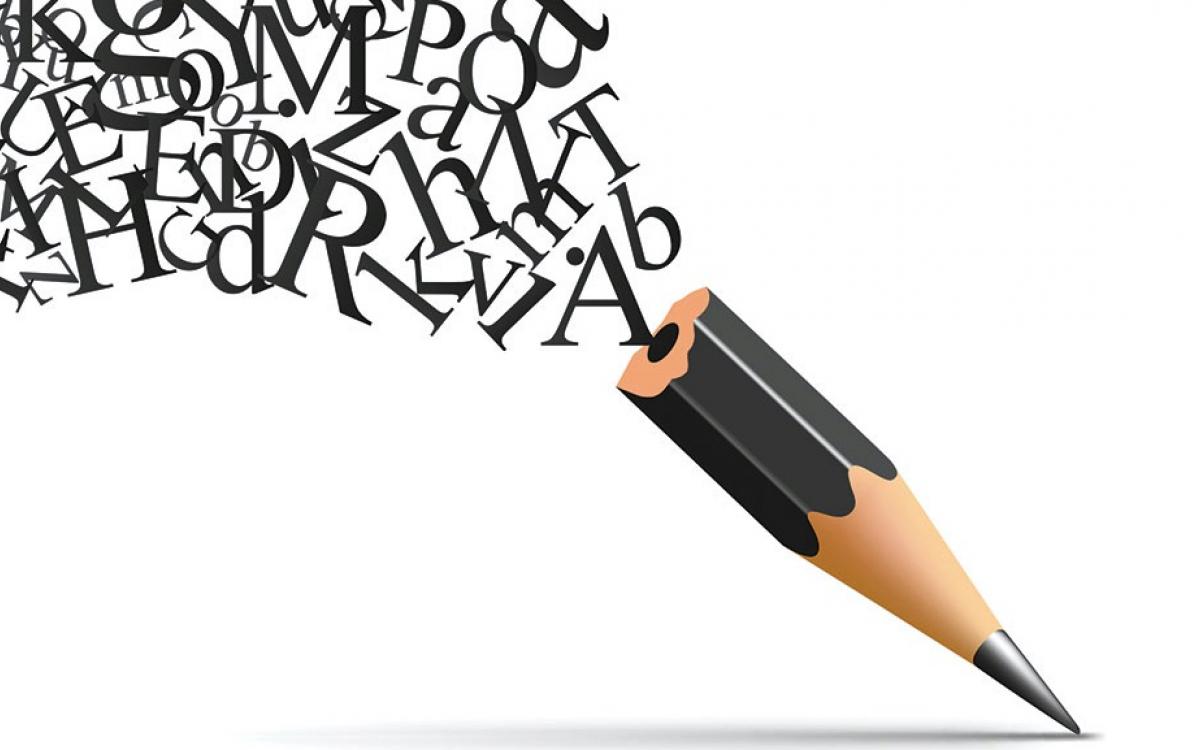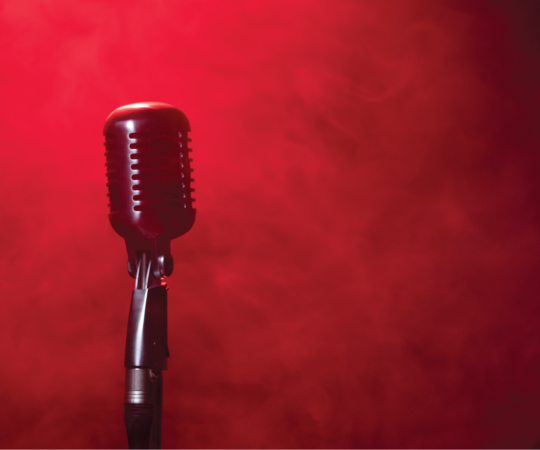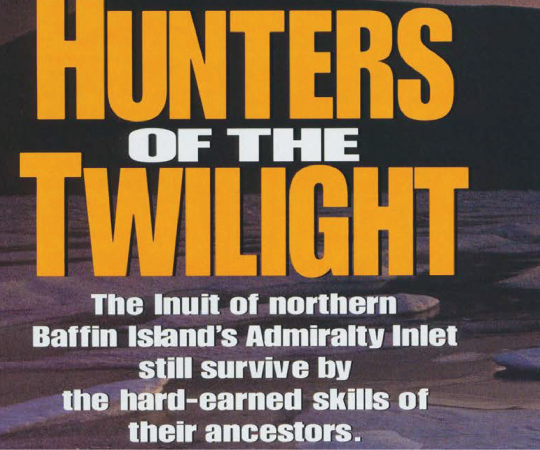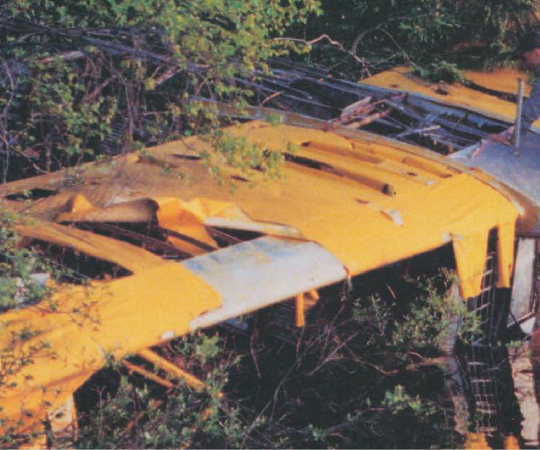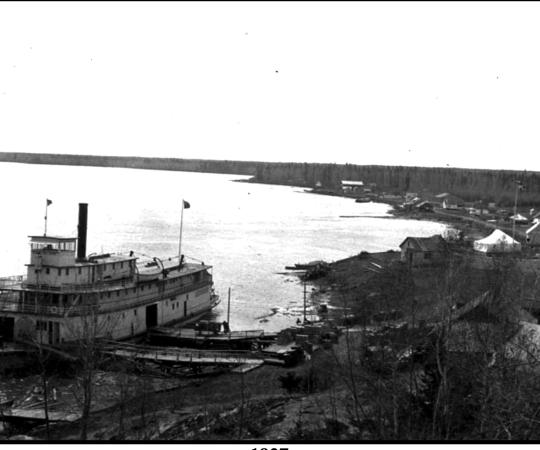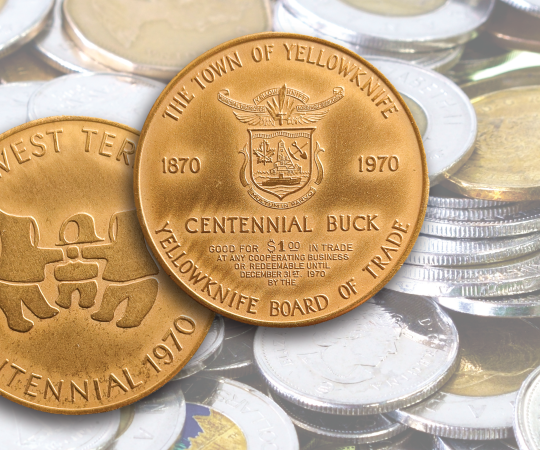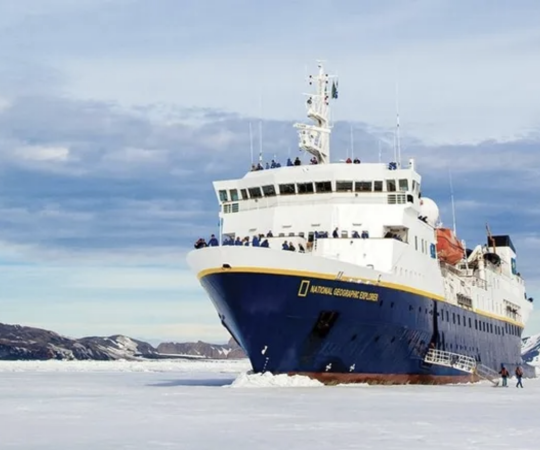Up Here commissioned young writers from each territory to write about what is most important to them, their peers and their communities. They chose their subjects, wrote their stories, and then worked with Up Here editors to learn about the editorial process and bring their voices to print. Together, these passionate and personal essays tell us that access to education and connecting with traditional history and cultural experiences are key to engaging the next generation of Northern leaders.
***
The way forward: Breaking the cycle by reconnecting with culture and values
by Katherine Takpannie
It’s dark inside your room with just the faintest light from the street coming through your window. Your door is shut but you can hear the adults down the hall yelling again. You’re praying it remains shut. Your muscles feel tight and you squeeze your legs into your chest, holding yourself, concentrating on what you can hear. “DON’T LIE TO ME!” And then CRASH! Glass hits the wall—or ceiling, or floor. You’re frozen in one spot, this tiny position, as small as you can make yourself. You want your ears to stop working, to block out the loud noises. You realize you aren’t breathing because you don’t want to make a sound to remind them you’re home. You wish that it all will just stop. You pray for the night to end.
You hate alcohol. You hate the smell on their breath when they lean in too close to your face to tell you you’re beautiful. They laugh too much at nothing in particular and can’t seem to stand up straight. You hate that if Anaana (mother) is alone she starts to cry and wail loudly. It pains your chest and it feels like it’s hot and burning and you want to cry. Do you hug Anaana? Do you let her be? What do you do?
The next day, you’re at school and not paying attention. You wonder, why is your family this way? You feel so alone, tired and drained. You feel hopeless because you can’t do anything to stop it. You want to get away from it all. But you love them so much. It feels like you’re being torn apart from the inside. Your veins are like telephone lines with people laughing and screaming through them. A bell rings for the next class and you’re brought back to reality.
How does this happen to so many of our Inuit families? Why are trauma and alcohol so closely woven together? How can we break this chain? There are no simple answers.
In our recent history, Inuit had to adapt from our way of life to Canada’s laws and education system. When communities in the Canadian Arctic were established in the mid-1950s, a dependency on the government’s social safety nets began to replace our incredible survival skills and our hunters’ drives to provide. Welfare created poor Inuit. Stress rises when people don’t have enough to eat, when food costs more than families can afford, and when housing is scarce.
Inuit have adapted to a new Canadian culture—a culture that isn’t ours, without our values and beliefs. Before, we did not have poor Inuit. We had a subsistence economy. We relied on our land to provide for our basic needs through hunting. Now in the market economy, we rely on jobs for money. The values of the market economy emphasize individualism, competition and consumerism whereas a subsistence economy values taking only what you need, sharing with others and teamwork. Our reliance on government social safety nets instead of our subsistence economy can lead to a crippling sense of insecurity or low self-esteem and eventually to depression. Alcohol is a way to deal with these unpleasant emotions and other trauma.
Many Inuit youth like myself are beginning to understand that we need to reconnect with our values and identity to break the cycle of addiction. Connecting with our Inuit cultural background and belief system provides a sense of history and belonging. During my first two years of Nunavut Sivuniksavut, a college program for Inuit in Ottawa, I began to understand the barriers Inuit face. Institutions like schools and hospitals do not have the funding to meet our specific needs. These places should reflect our culture so our values and practices can remain strong.
Many young Inuit are demonstrating resilience and showcasing our cultural identity. We speak with elders, make tools and sew, drum dance and sing, play Inuit games, hunt, tease others through ajaajaa (traditional song), and light a qulliq (oil lamp). We incorporate our culture into our art and fashion, and into our movies and music—from hip-hop to contemporary throat singing. We are entrepreneurs, authors, athletes and game coders. We become doctors, pilots and political activists. We put conflict into song and sing it away (this is called pisirsuq). We practice the central component of angakuuniq (the namesake tradition): when an Inuk receives his or her name from a deceased namesake, they carry the strength and skill and the same source of life, along with the same spiritual and physical qualities, as the person they were named after.
I have friends who apply Inuit Qaujimajatuqangit (knowledge) to modern life. That’s why it’s important to talk to elders who know these values. My friend Donovan Gordon-Tootoo, a fellow Nunavut Sivuniksavut alumnus, sums it up well: “Love is probably one of the most important things we can experience in life. We need to show our elders that our love will be passed on, and that those values we have been taught will survive. We owe it to them for teaching us and getting us here. All they ever wanted was a better future for us. The way we can do that is to pass on what they have taught us.”
Katherine Takpannie is an author/photographer whose family is originally from Apex Hill, NU, outside of Iqaluit. Takpannie uses writing and photography to reclaim her identity and explore her experiences as an urban Inuk.
***
Never too old to learn: How everything changed when I realized I can make a difference right now
by Holly Fantasque
I remember one time we were talking about residential schools in my Northern Studies class. My teacher asked the class what we thought was worse: abuse or death? All the other students said death. I chose abuse—it lives on for many generations.
I have always wanted to connect more deeply with my culture. My biggest fear is it’s being lost. This would be tragic since we have fought so hard—through smallpox, losing our land, and residential schools—to preserve it. Residential schools taught our people to be ashamed of who we are. I’m deeply affected by the residential school system even though I’ve never been to one. They were around for more than 100 years and they affected my family, my community and my people. We lost much of our great history, tradition, and culture, but I am thankful to everyone who stood up so youth today can feel pride instead of shame. I want our culture to live on.
Young people need to be committed to learning about our history. We need to develop a sense of pride about who we are and become aware of past struggles so we can better navigate the future. We can do this by spending more time with elders. When I was young, my father used to bring elders into our home in Fort Liard, NWT. I learned a lot from listening to their stories about how they lived on the land and survived the cold. It made me want to have stories of my own. I learned from my dad to go to elders when I need help. One elder made a drum for me and blessed it. For me, this was a welcoming into my culture.
Not many of our boys know how to drum. Learning the traditional songs of our ancestors would give boys a sense of pride and teach them about our way of life. We learn about tipis and the northern lights through songs. Some songs teach us about changing weather and caring for the environment. Learning different songs would help us embrace other First Nations cultures. Girls should be encouraged to dance too. When I dance, I feel a sense of power. It sparks up a fire. Some are embarrassed to do it. I tell them, “This is who we are. Let’s do it.”
Language is a powerful component of culture. People can tell what part of the North you’re from just based on your dialect. People are quick to recognize that I’m from the South Slave based on the way I speak. I learned Dene Yati in school from kindergarten through Grade 12. In that time, my language has grown on me. I still do not speak it a lot since there are not many people my age who know the language. I can understand it when I listen to older people speak, though. As I get older, I find I have a greater appreciation for my language. When I speak it, I feel strong. It shows me I belong somewhere.
I have lived in Fort Liard all my life. Next year, I will go away to university on Vancouver Island. I will leave the North and I know that it will be a big change. I will miss my home and my family. I will miss going on the land with my dad. He has been taking me out for as long as I can remember. He taught me everything I know about the bush: how to set traps for different animals, which animals to avoid unless absolutely necessary, and how to skin them from head to toe. He also taught me safety in the bush and what to do if someone is hurt. His grandparents taught him and he also learned from other elders and friends. A person is never too old to learn, he often tells me. He has never stopped learning and has been a great teacher to me.
I’m very proud to be Indigenous. I used to feel ashamed that my culture was dying, that I couldn’t speak my language, and that I knew very little about my traditions. But that stopped when I realized that I could make a change now. Our culture is what makes us strong. It is up to me and my people to pass on the teachings and Dene laws. No one can be allowed to wipe out our culture. We stand for everyone. We stand as a nation.
Holly Fantasque is a Grade 12 student at Echo Dene School in Fort Liard, NWT. She plans to go to college in the fall and return to the North as a journalist covering stories that matter to Northerners.
***
On healthy alternatives: The Yukon needs expressive outlets for youth, but not just in Whitehorse
by Manus Hopkins
Autum Jules was 13 when she left her home in Teslin for high school in Whitehorse. “It was a must if I wanted to continue my education,” says Jules, now 21. At the time, there wasn’t a high school in her community of 120, roughly 150 kilometres southeast of the Yukon capital.
In Whitehorse, Jules did things she couldn’t in Teslin. She played organized hockey, and went snowboarding on a real ski hill. She also earned high school credits through the Wood Street Centre program, which specializes in outdoor education and gives students first-hand outdoor survival experience. During the semester, they took a three-day winter camping trip, an eight-day Yukon-Alaska bike trip, and a weeklong canoe trip down the Yukon River to Dawson City.
“When there are none of those outlets available, that’s when boredom comes into play,” Jules says. “That’s when partying becomes more a part of life.”
A member of the Teslin Tlingit First Nation, Jules moved to Vancouver after graduation in 2015 to pursue a diploma in fashion design. She’s in Cambodia right now doing an international internship for Indigenous youth in her field. She says the education opportunities in Whitehorse helped get her to where she is today.
The Yukon offers a lot for youth to do. There are ski clubs and cadets and scouting programs. Community-run spaces and workshops give youth the chance to create art and learn music. There’s a sister-cities student exchange with Ushiku, Japan and there are extracurricular sports and band groups.
Several Yukon-raised youths and young adults interviewed say these activities are key to keeping youth away from excessive partying, drug use and even crime.
There’s just one problem: the majority of these opportunities are based in Whitehorse. Young people from smaller communities like Haines Junction, Watson Lake and Faro have fewer options.
Not all students have the means to move or travel to take advantage of what Whitehorse offers. “There were actually a couple of my friends that couldn’t do it,” Jules says. “I feel like there should be some funding put in place. You can apply for funding if you’re Indigenous, but what if you’re living in one of the communities and you aren’t?”
Affordability is the big issue, Jules says. She was lucky to get to play hockey, but many families do not have the money to put their children in sports or other extracurricular activities.
“The Yukon government could be working more closely with self-governments and bands to bridge that gap,” says Jules. “The youth can’t really do that on their own, so it needs to start at a higher level.”
But the Yukon’s smaller communities aren’t without their own opportunities—they may just not be as organized, established or consistently funded as programs in the capital. “I feel like we’re lucky in the communities because of our cultural connections to the land,” says Jules. “Kids can learn how to hunt, pick berries and swim at the docks, and they learn the traditional way of life from elders.”
Bringing together young people from all over the Yukon to share their cultures, experiences and skills could help bridge a disconnect in cultural understanding between Whitehorse youth and those in the communities. “It would bring more of a sense of self-knowing and more active global citizens to the Yukon,” says Jules. “That could decrease a lot of the problems we have there.”
Manus Hopkins grew up in Whitehorse and is an avid musician who has worked to build the local youth arts scene. In 2017, he moved to Toronto to study journalism at Ryerson University.

